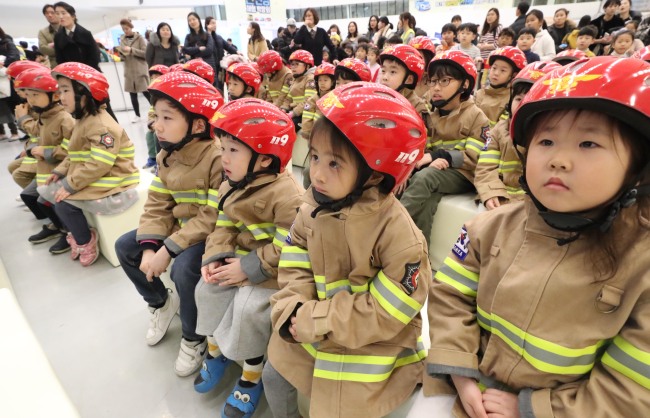Following a 4.8-magnitude earthquake detected near the coastal city of Pohang last month, experts are again voicing concerns that the Korean Peninsula may no longer be safe from strong shock waves.
The earthquake was an aftershock of the 5.4-magnitude earthquake that occurred in the same city in November last year. While no lives were lost in the November earthquake, some 1,500 residents in the area were left homeless. The quake is creating concerns as experts have repeatedly predicted the likelihood of strong quakes since 2016.
In September 2016, the country’s strongest quake since 1978 took place in Gyeongju, North Gyeongsang Province. It was a 5.8-magnitude quake, leaving many in the region temporarily homeless. Just two months prior to the quake in Gyeongju, a 5.0-magnitude earthquake was detected in Ulsan.
All of the three cities -- Ulsan, Gyeongju and Pohang -- are located in Gyeongsang provinces, located in the southeastern part of the Korean Peninsula. Experts have been voicing their concerns especially after the earthquakes in Ulsan and Gyeongju in 2016, claiming that the government should come up with measures to deal with future earthquakes and that quakes as strong as a magnitude of 7.0 may rock the peninsula.

Young children attend their earthquake preparedness training at Dongdaemun Design Plaza in Seoul on Feb. 22. (Yonhap)
“The 2016 Gyeongju events have now become forceful reminders that earthquakes have occurred in the past and can hit the region again at any time,” wrote Professor Kang Tae-seob of earth environmental system science department at Pukyong National University in his English-language thesis called “The Gyeongju Earthquakes: Observation and Remaining Questions.”
Unlike its neighboring country Japan, South Korea had long been considered a country with relatively little seismic activity.
Partly because of this, most buildings, including public schools, are not earthquake-resilient.
According to research by professor Son Moon of Pusan National University, only about 25.6 percent of all buildings in Busan, and 27 percent of those in Seoul, are earthquake-resistant structures.
The professor has repeatedly told the local media that South Korea is virtually and “completely unprepared” for possible disasters, especially earthquakes at 7.0-magnitude or greater.
And most of the buildings that are earthquake-resistant are only designed to resist earthquakes that are as strong as 6.5-magnitude, according to Ji Heon-cheol, the head of the quake research center at the government-funded Korea Institute of Geoscience and Mineral Resources.
Historically, today’s Gyeongsang provinces, especially the city of Gyeongju, have often experienced quakes since as early as the fifth century.
One of the deadliest earthquakes in Korean history also took place in Gyeongju. In A.D. 779, a strong earthquake hit the region, killing some 100 people and destroying many homes and properties. Today’s scientists estimate that the earthquake was of magnitude 6.0 or even greater, based on the damages and casualties recorded in documents.
According to a book titled “Earthquakes in Korea,” written by historian Kim Bu-sik, the Gyeongju area was frequently hit by earthquakes especially during the 11th century.
Three earthquakes occurred in today’s Gyeongju in 1012 according to the book, and in 1025, 10 prefectures of today’s Gyengsang provinces, including Gyeongju, were hit by an earthquake.
The region was also hit by earthquakes in the 17th century. Many scholars point to the minor Ulsan fault as the reason for the region‘s frequent earthquakes.
The fault, one of the few active faults in South Korea, is believed to have been reported for its consistent seismic activities.
Professor Kang Tae-seob of Pukyong National University says it is important to note that Gyeongsang provinces have two big, heavily populated cities -- Ulsan and Busan -- and that the Wolsong Nuclear Power Plant is located in Gyeongju. A massive disaster could result, he said, should a strong earthquake compromise the safety of the nuclear plant in the region.
Son Moon at Pusan National University notes that Busan is especially vulnerable as it is surrounded by mountains. Should a strong quake strike Busan, he said, it is very likely that a major landslide would occur at the same time.
Meanwhile, a comprehensive plan to deal possible earthquakes that was promised by the central government and Pohang following last year’s quake in the city has yet to be unveiled.
By Claire Lee (
dyc@heraldcorp.com)






